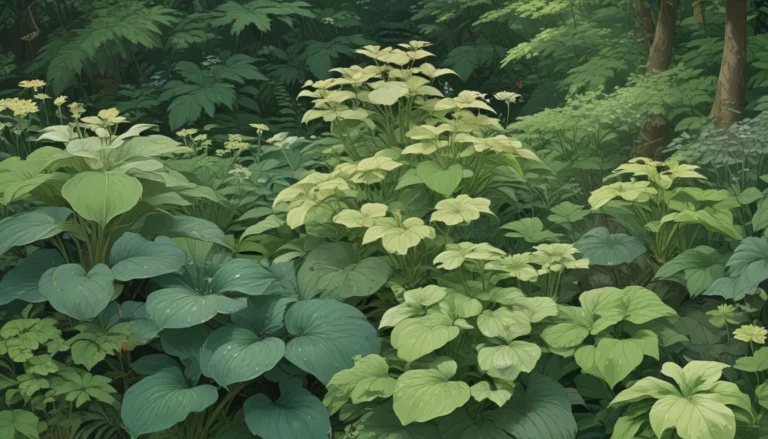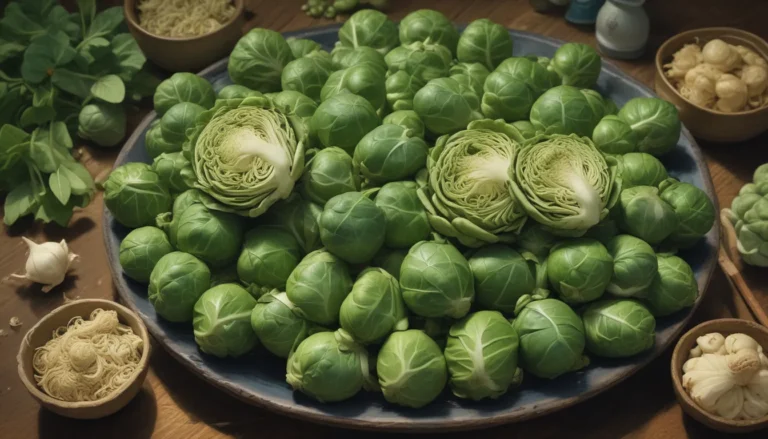How to Identify and Control Caterpillars on Tropical Hibiscus

Caring for tropical hibiscus plants can be a rewarding experience, but it also brings its fair share of challenges. One common issue that gardeners face is dealing with caterpillar pests that can wreak havoc on these beautiful plants. In addition to causing damage to the foliage, some caterpillars have the potential to deliver painful stings, making them a nuisance to handle.
In this comprehensive guide, we will delve into the world of caterpillars that target tropical hibiscus plants. We will explore the different species you need to be on the lookout for and discuss effective methods to control them. So, let’s get started by examining the common caterpillar pests that target tropical hibiscus:
Common Caterpillar Pests That Target Tropical Hibiscus
- Io Moth
- Saddleback Moth
- Hibiscus Leaf Moth
- Mallow or Hibiscus Sawfly
Caterpillars are fascinating creatures that transform into beautiful butterflies and moths. However, when it comes to dealing with them in your garden, it’s essential to understand how to identify and manage these pests effectively.
Io Moth
The Io moth, also known as the peacock moth, is a visually striking species that can be found on tropical hibiscus plants. While the adult moths are appealing, their larvae can deliver a painful sting if handled, so it’s important to exercise caution when interacting with them.
These caterpillars exhibit aposematic coloration, with yellow and green stripes along their bodies. If you encounter an Io moth caterpillar, avoid direct contact to prevent stings. If necessary, you can safely relocate them using gloves and garden tools.
Saddleback Moth
The saddleback moth caterpillar, belonging to the Limacodid family, is another species that gardeners should be cautious about. These caterpillars have a distinct appearance, with a lime-green saddle shape on their backs. A sting from these caterpillars can cause irritation and skin damage, so it’s best to avoid contact and seek medical attention if stung.
When dealing with saddleback moth caterpillars, relocate them carefully to prevent accidental stings. These creatures play a role in the ecosystem, so handling them with care is essential.
Hibiscus Leaf Moth
The hibiscus leaf moth is a less harmful caterpillar species that feeds on hibiscus foliage. While they may cause some damage to plants, they are not venomous like other species we’ve discussed. It’s possible to relocate these caterpillars by hand if they pose a threat to your plants.
Identifying hibiscus leaf moths can be challenging due to their variable coloration. However, they typically have a yellow or orange spot behind their heads, which can help with identification. If you encounter these caterpillars, consider relocating them or allowing them to coexist with your plants.
Mallow or Hibiscus Sawfly
The mallow sawfly is a species known for causing damage to hibiscus plants by creating shot-like holes in the leaves. Unlike true caterpillars, sawfly larvae have distinct features that set them apart. While they may not sting, they can cause significant damage to foliage if left unchecked.
To manage mallow sawflies, consider using environmentally friendly products like Bacillus thuringiensis kurstaki (Btk), neem oil, or insecticidal soap. These options can help control infestations without harming beneficial insects or pollinators.
Tips for Managing Caterpillar Pests
When dealing with caterpillar pests on tropical hibiscus plants, consider the following tips to effectively control infestations:
-
Early Identification: Regularly inspect your plants for signs of caterpillar damage, such as defoliation, chewed margins, or curled leaves. Early detection can help prevent infestations from spreading.
-
Safe Handling: Exercise caution when handling caterpillars, especially species known for stinging. Use gloves and garden tools to relocate them safely without direct contact.
-
Environmentally Friendly Solutions: Opt for natural pest control methods like Bacillus thuringiensis kurstaki (Btk), neem oil, or insecticidal soap to manage caterpillar infestations without harming beneficial insects.
-
Observation and Education: Take the opportunity to observe caterpillars as they transform into moths or butterflies. This can be a valuable learning experience for children and a way to appreciate the beauty of these creatures.
By following these tips, you can effectively manage caterpillar pests on your tropical hibiscus plants while preserving the health of your garden ecosystem.
Conclusion
In conclusion, dealing with caterpillar pests on tropical hibiscus plants requires a combination of vigilance, safe handling practices, and environmentally friendly pest control methods. By identifying common caterpillar species and understanding their behaviors, you can effectively manage infestations and protect your plants from damage.
Remember to observe and appreciate the transformation of caterpillars into beautiful moths or butterflies, making the process a learning opportunity for yourself and others. With the right knowledge and tools, you can create a healthy and thriving garden environment for your tropical hibiscus plants.
We hope this guide has provided valuable insights into identifying and controlling caterpillar pests on tropical hibiscus plants. If you have any experiences or tips to share, feel free to leave a comment below. Thank you for reading!





